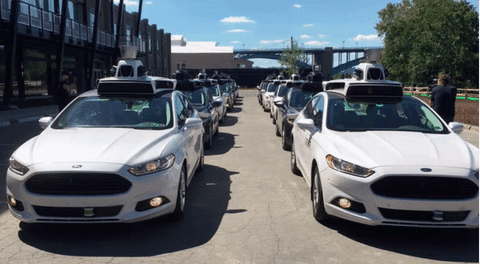An Anti-Drone Rifle
A new company called Skynet has made an anti-drone weapon shaped like a gun. It’s really just a pair of big antennas that weigh roughly 12.5 pounds and have a range of 1.25 miles (without interference). But the anti-drone rifle can jam GPS signals to a quadcopter, and shut its camera off, causing the hovering drone to land. Read more about it here.
A Star Being Sucked Into A Black Hole
When a black hole gobbles up a star, a flare of energy is released. The burst demolishes nearby space dust, but dust farther out is heated and gives off infrared radiation. Astronomers can find and read these light echoes for up to a year to gather more information about the star’s demise. Now, they’ve sniffed out four of these flares with NASA’s Wide-field Infrared Survey Explorer (WISE) spacecraft. Their findings are posted in two independent studies to the arXiv.
Futuristic Fertilization
Until now, we’ve only been able to form embryos using a normal sperm-egg combo. But according to research published in the journal Nature Communications this week, scientists have developed a brand-new technique in which they can form mouse embryos from a pseudo-egg called a parthenogenote that are reprogrammed to trick sperm into fertilizing them. The fertilized pseudo-eggs gave a 24 percent success rate for producing mouse pups after implantation in female mice — a success rate that is on par with in vitro fertilization rates. So maybe one day in the future we won’t be limited by having a man and a woman to conceive a child.
Underwater National Monuments
This week, President Barack Obama created the Northeast Canyons and Seamounts Marine National Monument, the first Marine National Monument in the Atlantic Ocean. It covers an area the size of Connecticut and features underwater canyons and seamounts (underwater mountains). The new monument is also home to a huge variety of rare sea life including corals, fish, and turtles. Read more about it here.
A Solar-Powered Boat
The Energy Observer could soon become the first green boat to hit the waves. The 100-foot catamaran is backed by the same people who brought Solar Impulse to the skies. The Energy Observer is currently getting prepared to make a February cast-off for a round-the-world voyage. The entire journey is planned for a total of six years. To complete it, the solar-powered boat will make more than 100 stops along the way.
Drones To Track Other Drones
DARPA wants to have a way to track every drone in the sky, especially ones in sensitive areas like war zones. This week it announced that it envisions having a network of surveillance nodes, each providing coverage of a neighborhood-sized urban area. The project, which it calls the “Aerial Dragnet”, is supposed to mimic aircraft tracking tools, because drones are currently too small for the general radar tracking that is used for airplanes and helicopters.
Robotic Frogs Used To Study Bats
To study how bats hunt down their prey when their hearing is obstructed by man-made noise, scientists from VU University in Amsterdam used special robotic frogs. The tiny robots imitated mating calls of male túngara frogs; a sound that also attracts bats and tells them where their supper is located. But when man-made noise masked the sound of the robotic frog call, bats were forced to switch from using their hearing to actively echolocating. Their flexibility may be a key to understanding how bats will fare in the future as noise from cities and industries increases.
Bionic Olympics
Next month, more than fifty teams from around the world will meet near Zurich, Switzerland where they will show off their skills in manipulating computer characters, going up and down stairs in powered wheelchairs, and racing to pick up objects with their bionic hands. The events, which start on October 8, are part of the world’s first-ever Cybathlon, and are intended to helps drive research on assistive technologies forward —the same way NASCAR and Formula One races have led to advances in automotive technology.
Dog-Sized Dinos
Psittacosaurus was a dog-sized cousin of Triceratops with a parrot-like beak. The small dinosaur lived about 100 million years ago, and hid from predators by blending into the background as much as possible. Researchers studying a Psittacosaurus fossil specimen found that the colors on the underside of the dinosaur were much lighter than the ones on the back, which usually helps with camouflage in the forest and is something that is still seen in animals today. Read more about it here.









